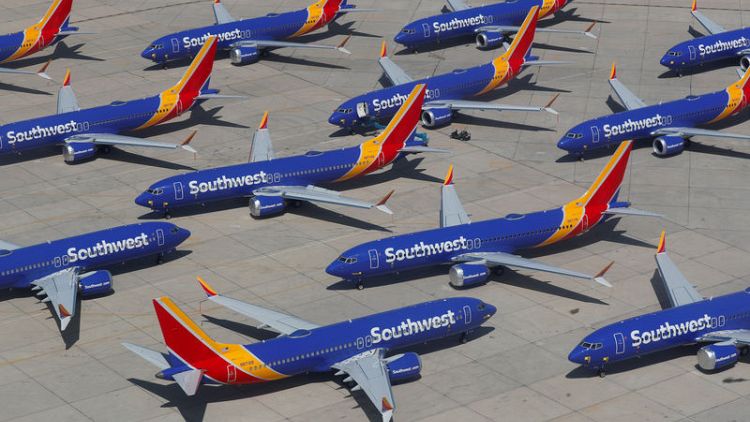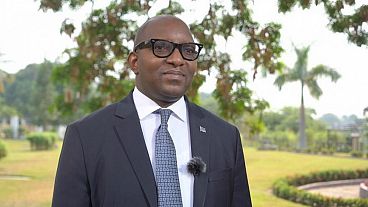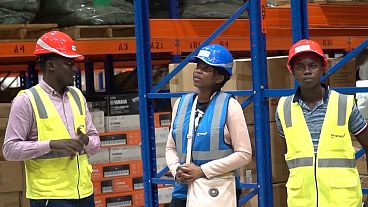By Tracy Rucinski
CHICAGO (Reuters) - Once regulators approve Boeing Co's grounded 737 MAX jets for flight, each aircraft will likely require between 100 and 150 hours of preparation before flying, officials from the three U.S. airlines that operate the MAX told Reuters.
The estimate, provided to Reuters by American Airlines Group Inc, United Airlines and Southwest Airlines Co officials, is the first indication of the time needed to bring the jets out of storage following a worldwide grounding in March spurred by deadly crashes in Indonesia and Ethiopia.
The preparations were discussed at a meeting between Boeing and MAX customers in Miami earlier this week, and include a list of items ranging from fluid changes and engine checks to uploading new 737 MAX software. The estimated time frame does not include pilot training, they said.
Southwest is the world's largest MAX operator with 34 jets, followed in the United States by American Airlines with 24 and United with 14. All three have dozens more on order, meant to service booming air travel demand.
Boeing did not comment on the airlines' MAX maintenance estimate, but spokesman Paul Bergman said the company's maintenance and engineering teams have been working with customers to determine how to efficiently stage work once regulators approve the fleet's return to service.
The process has included work with Boeing's supply chain to ensure key parts "are available for current maintenance tasks and the fleet's transition from storage and preservation activities to operational flight," he said.
Airline officials stressed that jets would only be removed from storage once regulators approve Boeing's software update, meant to fix a system called MCAS that played a role in both crashes, which together killed 346 people.
U.S. Federal Aviation Administration Chief Dan Elwell, who is meeting with global regulators in Texas on Thursday, said on Wednesday there is no time table to approve the plane for flight.
Boeing has yet to formally submit the fix to the FAA.
Officials said it usually takes 80 hours to put one jet into storage. For removal, the process is reversed and requires additional maintenance work and testing. For the MAX, it will also include uploading and testing the software fix.
PILOT TRAINING
The allotted 100 to 150 hours of jet preparation comes on top of the hours needed for pilot training. Regulators are still debating whether pilots should test the crash scenarios in a simulator, which would cost airlines more time and money than Boeing's proposed computer-based training.
Boeing has said that simulator training is not necessary for the 737 MAX, and is recommending a mandatory computer-based audio course that explains MCAS and could be completed at a pilot's home in about an hour, according to pilot unions.
The planemaker has also offered supplemental training that includes a video on emergency checklists, though some regulators and pilots are pushing for either immediate or continuing simulator training.
Ultimately each airline will be responsible for developing its own training regime based on its different needs.
So far U.S. airlines have cancelled MAX flights into July and August, taking a hit to revenues during the busy summer travel season, and will need to decide soon whether to extend cancellations given the uncertain regulatory timeline, officials said.
Southwest has parked its MAX jets at a facility in the California desert, while American has parked 14 of its 24 jets in Tulsa, Oklahoma, where it plans to prepare the jets for flight once regulators give the green light.
Boeing will also have to ready roughly 30 MAX jets that it is storing across the Seattle area, with wheels and engines wrapped in plastic, before delivering them to customers.
The planemaker is also storing MAX jets at a maintenance base in Texas. Deliveries were halted following the worldwide grounding.
(Reporting by Tracy Rucinski; additional reporting Eric M. Johnson; editing by Edward Tobin)



